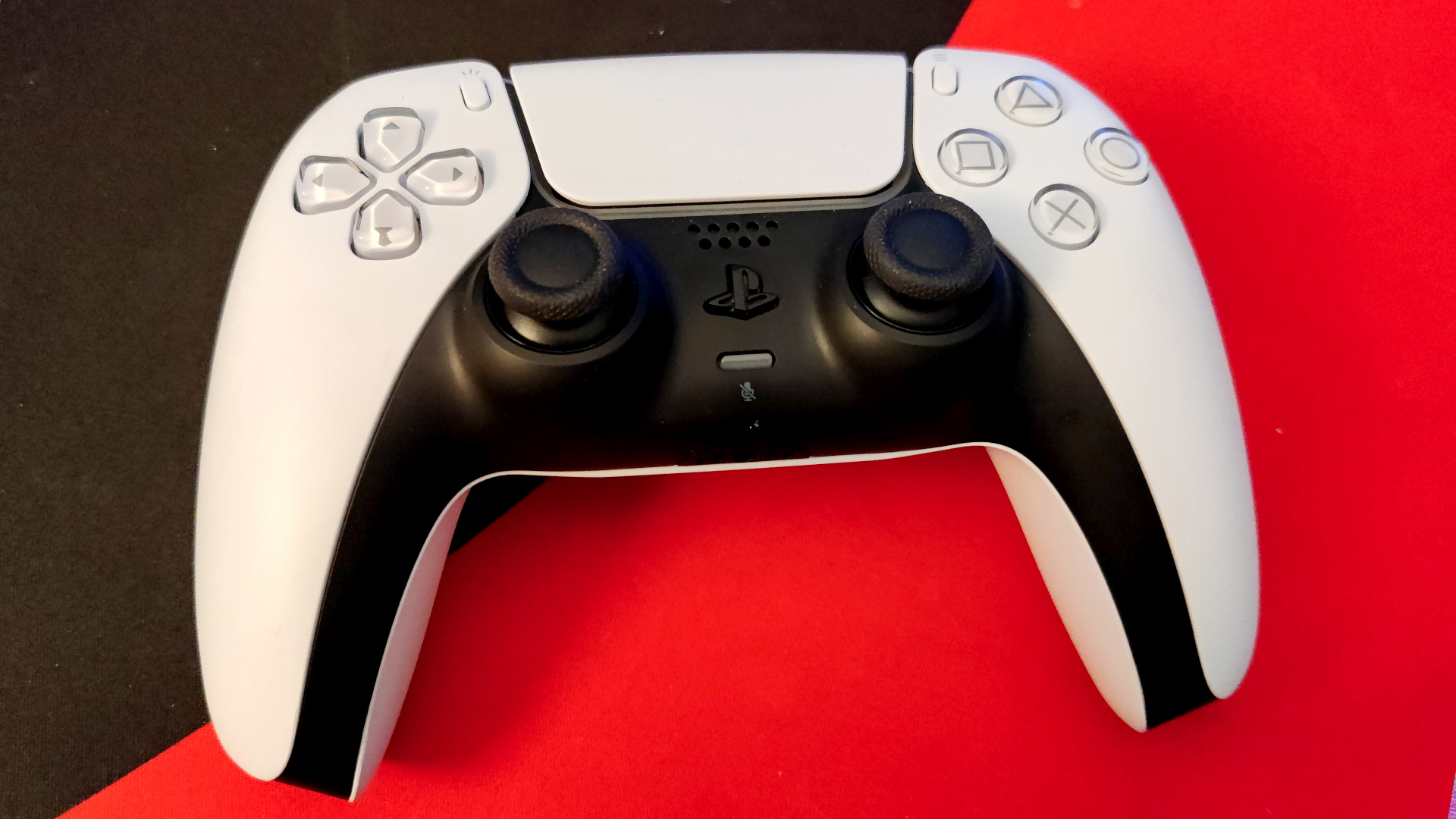Sony might be ready to launch an updated Dualsense controller with a much larger battery capacity
That's great and all, but how about a permanent fix to stick drift?

Sony's masterpiece of design, the Dualsense controller, is packed to the hilt with features: An awesome haptic feedback system, a touch-sensitive panel, and a sweet mini-speaker for added immersion in games. Naturally, one needs a PlayStation 5 to make the most of these but one thing that's a bit of a pain on both PC and consoles is the rather small battery capacity. But that may well be a thing of the past if the specs of a purported second version are to be believed.
We spotted this over at Sweclockers, where somebody noticed a now-removed listing at Best Buy Canada for a Sony Dualsense V2 controller. Looking identical to the original model, the product description stated that the updated design will have an "exceptional 12-hour battery life, on a full charge."
The listing also included Sony's official charging station with the new controller, and all for the same price as a current Dualsense. Looking at Best Buy's US page, the standard white model retails at $70 (the more colourful options are $5 more) and the dual controller charger is $30, but since the page has been taken down, I can't check what was shown.
I do think Sony is planning to update its Dualsense, though maybe not until the much-rumoured PlayStation 5 Pro comes to market. There's very little wrong with the current model (it's nigh on perfect, to be honest) but the one area that it's not so hot in is how long the battery lasts. We've got two Dualsense controllers in my house and the one that came with the PS5 console only lasts for around four or five hours of constant use.
The other is better but no more than an hour or two, at most. So if Sony is going to release an updated controller with a 12-hour battery lifespan, then that would be great news. Having said that, as lush as the Dualsense is, I do prefer Microsoft's approach of letting me swap batteries about as I see fit.
There's something uniquely awesome about loading up an Xbox controller with two new AA batteries and I can't be the only one who pretends it's a Doom-like shotgun moment every time.
To be honest, though, the amount of time I can use a Sony controller isn't a massive issue, even though the battery isn't directly replaceable. I have a spare controller and the official charging station, so there's always a second one close to hand when it runs out of charge. But if a new one does come with a longer battery life, I may well place an order or two.
Keep up to date with the most important stories and the best deals, as picked by the PC Gamer team.

Best gaming monitor: Pixel-perfect panels for your PC.
Best high refresh rate monitor: Screaming quick.
Best 4K monitor for gaming: When only high-res will do.
Best 4K TV for gaming: Big-screen 4K gaming.
What I'd like to see, though, is an end to stick drift and I'm happy to pay more for it. Sure, one can replace the thumbsticks on pretty much any controller but Hall effect sticks have been around for decades, and there's no excuse for the likes of Nintendo, Microsoft, and Sony to not use them. Well, there is and it's called profit margins.
Other than Nintendo, console manufacturers don't make much money (if any at all) on the base consoles but pull in profits through accessories and game licence fees. Sony may be reluctant to raise the price of the Dualsense controller, by fitting decent thumbsticks, to ensure the revenue stream doesn't drop.
I know I'm just shouting at the wind here but please Sony, do the right thing. Give us a Dualsense V2 with a decent battery and drift-proof controls, and forget about bundling a charging station with it. I'd happily pay the extra it would all cost and I suspect I'm not the only one who feels that way.

Nick, gaming, and computers all first met in 1981, with the love affair starting on a Sinclair ZX81 in kit form and a book on ZX Basic. He ended up becoming a physics and IT teacher, but by the late 1990s decided it was time to cut his teeth writing for a long defunct UK tech site. He went on to do the same at Madonion, helping to write the help files for 3DMark and PCMark. After a short stint working at Beyond3D.com, Nick joined Futuremark (MadOnion rebranded) full-time, as editor-in-chief for its gaming and hardware section, YouGamers. After the site shutdown, he became an engineering and computing lecturer for many years, but missed the writing bug. Cue four years at TechSpot.com and over 100 long articles on anything and everything. He freely admits to being far too obsessed with GPUs and open world grindy RPGs, but who isn't these days?

